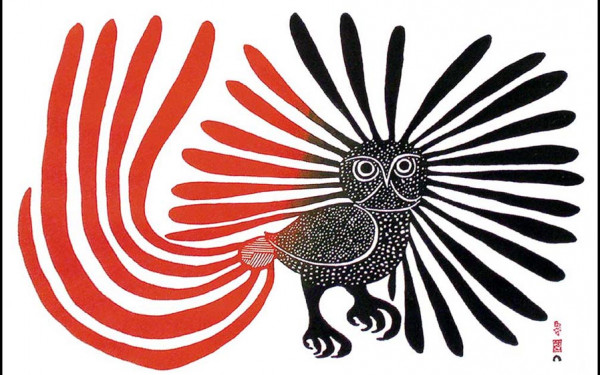Architects Make Waves at FIFA
The Aqua Tower and the Woman Behind It
In the centre of Chicago’s high-rise district, a certain building stands out amongst the others—the Aqua Tower.
The tower and Jeanne Gang, the woman behind the structure, were a combined focus for a mini-documentary that screened last week at the FIFA Festival.
The film, entitled Studio Gang Architects: Aqua Tower, was as captivating as it was short, screening briefly before the headlining Contemporary Days: The Work of Robin and Lucille Day.
The two films formed a double bill as part of the CCA’s design and architecture programming for the festival.
Designed by Gang, the Aqua Tower is a product of Studio Gang Architects, a Chicago-based collective of designers, architects and thinkers.
Gang, an accomplished young architect, earned her master’s in architecture from Harvard in 1993. She went on to work for the prestigious Office for Metropolitan Architecture and Rem Koolhaas.
In 1997, at the tender age of 33, she launched her practice and namesake studio.
Her Aqua Tower is the tallest building in the world to have a woman as the lead architect behind it. The structure has gained worldwide praise.
Seeing the tower from afar, the 82 story high-rise fits right into Chicago’s modernist skyline. Only upon approaching the structure does one get a true sense of its impressive and multi-faceted form.
The Aqua Tower was constructed using glass and irregularly shaped concrete floor slabs, which lend to the facade of its lucid, sculptural quality. Gang cites striated limestone outcroppings—which are a common topographic feature of the Great Lakes region—as inspiration for these slabs.
Gang speaks passionately about her field and the multiple ways that architecture can be approached, explaining how the group’s studio acts “more like a think tank than a traditional architecture firm.” She excitedly explains how the vision of the design collective are mostly inspired by motifs found in nature.
A champion of sustainable architecture, Gang stresses the need to make wider considerations when working on a project. “Every project has a context that is much bigger than itself,” she says in the film.
These considerations point to the Aqua Tower’s wild form, which is rhythmically defined by its organic, concrete shapes.
Gang explains her approach and intentions for using concrete—an appropriate and ubiquitous material in architecture. She attempts to explore its expressive potential by using concrete to its fullest potential. “It can form to any shape, and we wanted to exploit that,” she said.
The concrete slabs again find purpose beyond mere aesthetics. The wave-like ripples also serve as the Aqua’s balconies; their flowing shapes allowing for communication between neighbors. This communicative sense of architecture creates a sense of community that is impossible with most of the buildings that fill the urban cities of the western world.
“We wanted to make it possible for people in the building to be able to actually step out and be on the building,” Gang says. “We really thought of it more as a habitable facade.”
Studio Gang Architects: Aqua Tower provides a wonderful insight into one of the world’s most
fascinating high-rise buildings, leaving the viewer wanting more than just a 22-minute documentary.
This article originally appeared in Volume 31, Issue 28, published March 29, 2011.

2__700_933_90.jpg)
__700_933_90.jpg)


_600_375_90_s_c1.jpg)

3_600_375_90_s_c1.jpg)